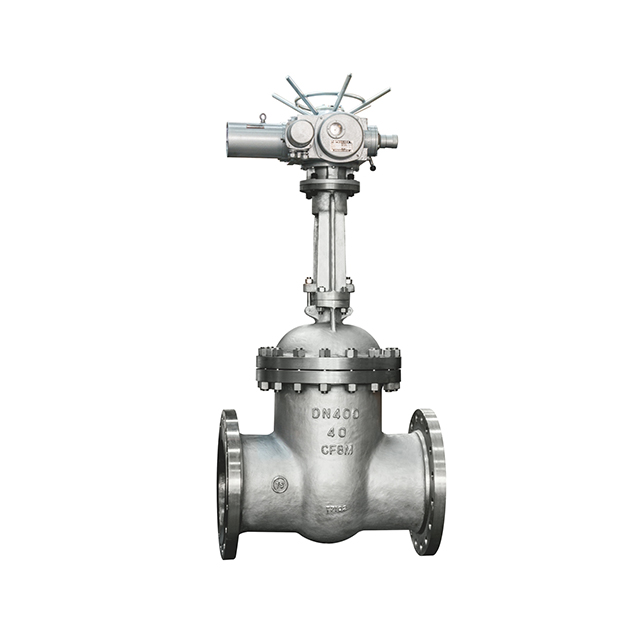Injap pintu penggerak elektrik ialah komponen penting dalam pelbagai industri, menawarkan kawalan aliran bendalir yang boleh dipercayai dan cekap. Injap ini memainkan peranan penting dalam mengawal selia pergerakan cecair atau gas melalui saluran paip, membolehkan pengasingan atau pengalihan aliran mengikut keperluan. Dalam panduan komprehensif ini, kami akan menyelidiki dunia injap pintu penggerak elektrik, memberikan cerapan tentang definisi, jenis, prinsip kerja dan ciri utamanya untuk membantu anda memahami produk ini dengan lebih baik.
Injap pintu penggerak elektrik ialah peranti yang mengawal aliran bendalir dengan menggunakan penggerak elektrik untuk mengendalikan pintu atau baji yang menghalang atau membenarkan laluan melalui injap. Mereka datang dalam pelbagai jenis, masing-masing sesuai untuk aplikasi tertentu. Jenis biasa termasuk:
Injap ini mempunyai batang yang bergerak dalam arah linear ke atas apabila membuka atau menutup pintu pagar. Kedudukan batang memberikan petunjuk yang jelas tentang status injap.
Berbeza dengan injap gerbang batang meningkat, injap pintu batang tidak naik mempunyai batang yang tidak bergerak secara linear apabila mengendalikan pintu pagar. Sebaliknya, batang berputar untuk membuka atau menutup injap, menjadikannya sesuai untuk aplikasi dengan ruang menegak yang terhad.
Injap pintu penggerak elektrik beroperasi berdasarkan prinsip menghalang atau membenarkan aliran bendalir melalui mekanisme get atau baji. Apabila penggerak elektrik menerima isyarat, ia mengaktifkan pintu injap, sama ada menaikkannya untuk membuka laluan aliran atau menurunkannya untuk menyekat laluan. Penggerak menyediakan kawalan yang tepat, membolehkan pelarasan cepat dan tepat untuk mengawal aliran bendalir.
